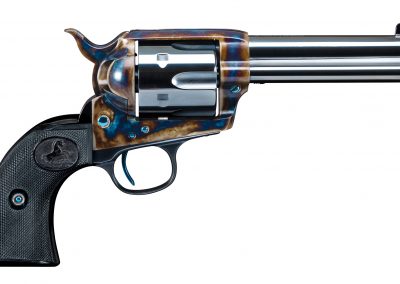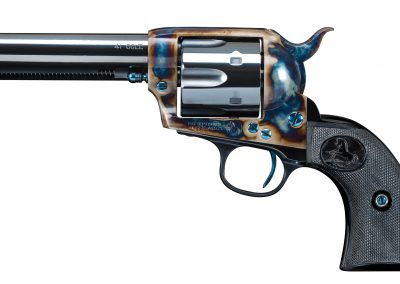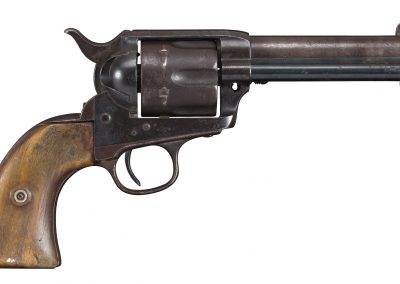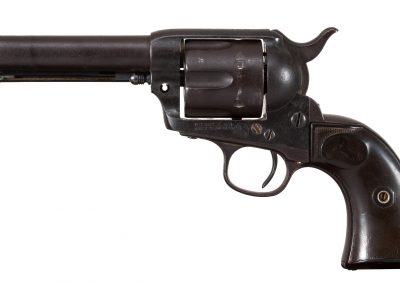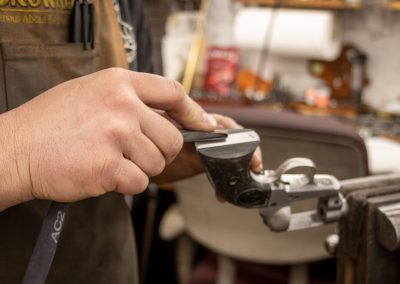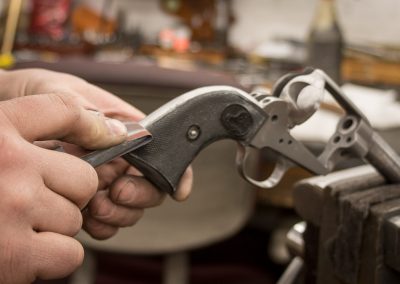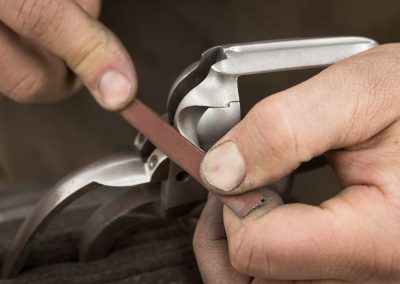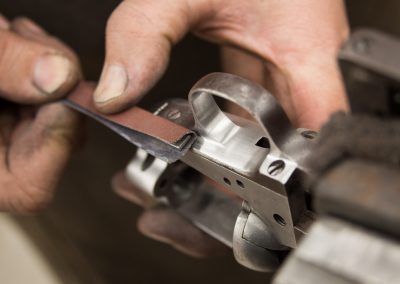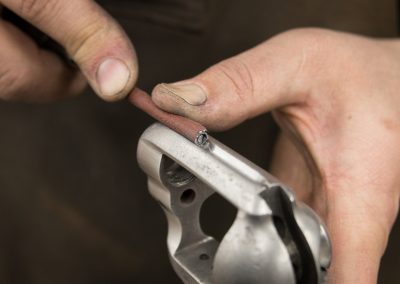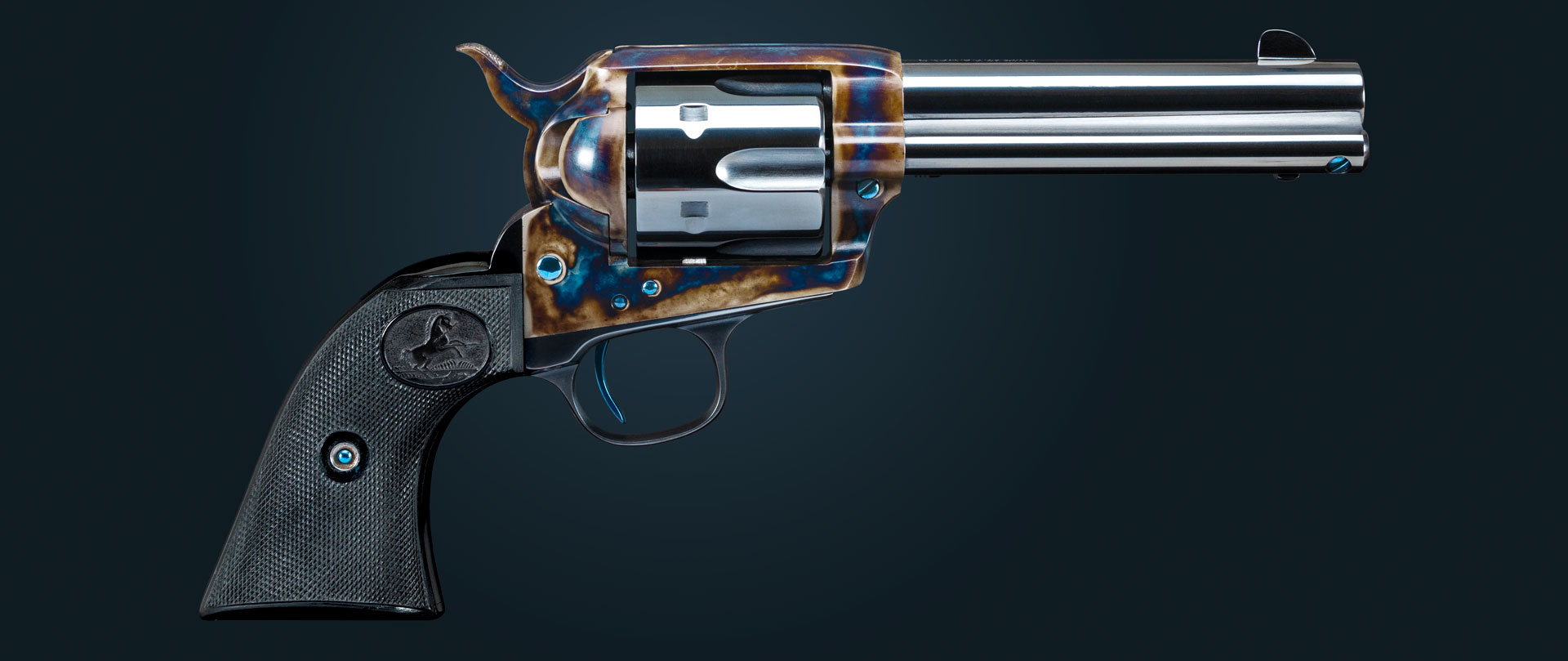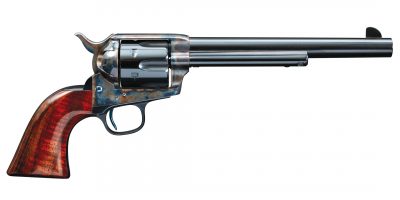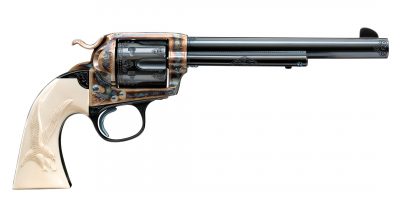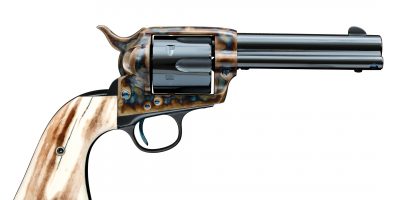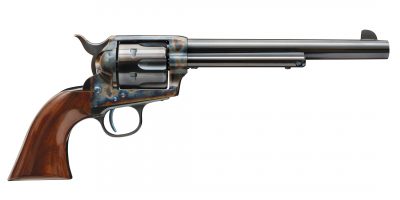Colt SAA (Single Action Army Revolver)
Exploring the ClassicsQUICK HITS
Original Manufacturer: Colt’s Patent Firearms Manufacturing Company (Related article: The Life and Legacy of Samuel Colt)
Model Designation: Single Action Army Revolver (also known as SAA, Model 1873, Peacemaker)
Firearm Type: Single Action Revolver
Designers: William Mason and Charles Brinckerhoff Richards
Years Produced: 1873 – 1941 (First Generation)
Most Prominent Chamberings: .45 Colt, .44 WCF (.44-40), .38 WCF (.38-40), .32 WCF (.32-20) and .41 Colt (often called .41 Long Colt). The Colt SAA would eventually be chambered for 36 different cartridges.
Key Features: First-generation examples were initially made with iron frames that were color case hardened to withstand the higher pressures, and employed a screw to retain the base pin latch up to serial number 164,100 (i.e., the switch-over from “black powder frames” to “smokeless frames’). Along with the bone charcoal case hardened frame and hammer, metal features included: charcoal blued backstrap, trigger guard, ejector housing and barrel; base pin, screws, and trigger were finished in nitre blue.
Restoration Notes: Look for desirable stampings on the one-piece walnut grips: “OWA”, for Orville Wood Ainsworth, Colt’s earliest ordnance sub-inspector; “HN”, for Henry Nettleton, the Springfield Armory’s principal sub-inspector. A defining feature of an early-production Model 1873 is the “pinched frame”, that is, the way that Colt fashioned the rear sighting groove. Less than 200 of these examples were made. All issued SAAs have “U.S.” stamped on the left side of the frame, with either two- or three-line patent dates.
DID YOU KNOW?
- The development of the Model 1873 SAA revolver can be credited, at least in part, to the United States Army’s rejection of Colt’s Model 1871-72 Open Top revolver.
- Re-imagined with the inclusion of William Mason’s top strap design, and chambered for the new .45 Colt round (developed by Colt in partnership with the Union Metallic Cartridge Co), Colt re-submitted their revolver to the U.S. Army. The Army accepted, and thus production of the Single Action Army model 1873 began in 1873. It was also referred to as the “New Model Army Metallic Cartridge Revolving Pistol”.
- As Winchester released its Model 1873 lever action rifle in .44-40 around the same time, Colt answered demand for identically-chambered six-guns in 1877 with its Frontier Six-Shooter.
- The moniker “smokeless frame” (i.e,. referring to a switch in frame design in 1896) actually has little to do with smokeless powder, as colt didn’t certify its SAAs for use with smokeless powder until until around serial number 180,000 (produced in 1898). This is mainly a collector’s term to differentiate between two different eras of thee SAA’s first-generation design.
- The Bisley model was introduced in 1894 as a target pistol. The name Bisley came from the famous firing range in Bisley, England. The Colt Bisley can be distinguished by the longer grip, the wider hammer spur, and the wider trigger.
Colt SAA Up Close
Browse some our most recent examples of Colt SAA restorations (browse all), and well as pre-owned SAAs (browse all) that are either in-stock or have recently passed through our showroom.
Restored Colt SAAs
Pre-Owned Colt SAAs
-
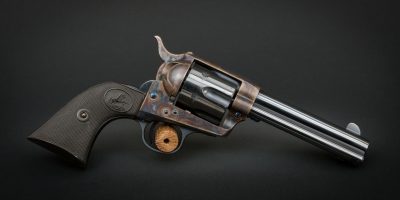
Colt SAA Revolver with Factory Letter, Restored in 2000
Log Number: 24007Caliber: .45 Colt $6,400.00 -
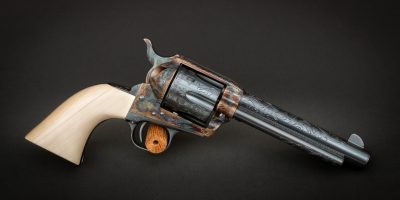
Colt SAA, 3rd Generation, Turnbull Engraving and Finishes
Log Number: 442CCaliber: .45 Colt $10,000.00 -
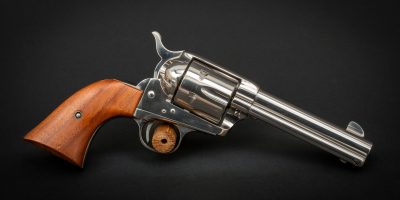
Colt SAA, 1st Generation, Nickel Plated – SOLD
Log Number: 392CCaliber: .45 Colt -
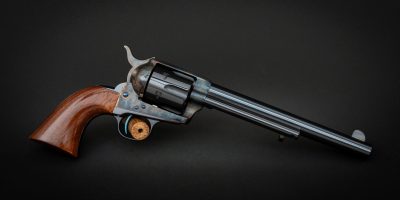
Colt SAA with Factory Letter, Newly Restored
Log Number: 23511Caliber: .45 Colt $16,000.00
Learn More
Load up on all of our favorite classic SAA content from around the web.
Colt SAA Videos
Colt SAA Articles
We’d like to acknowledge the following sources used in the creation of this article, and encourage you to visit them to learn even more about the Colt SAA.
A Look Back at the Colt Single Action Army: American Rifleman
Classic Guns – Colt Single Action Army Revolver: Shooting Illustrated
The (Hand) Gun the Won thew West – Colt Single Action Army: Guns.com
The SAA’s Most Prominent Calibers: Guns Magazine
Black Powder Framed Peacemaker – What Does it Mean? Richard Beal’s Blog
